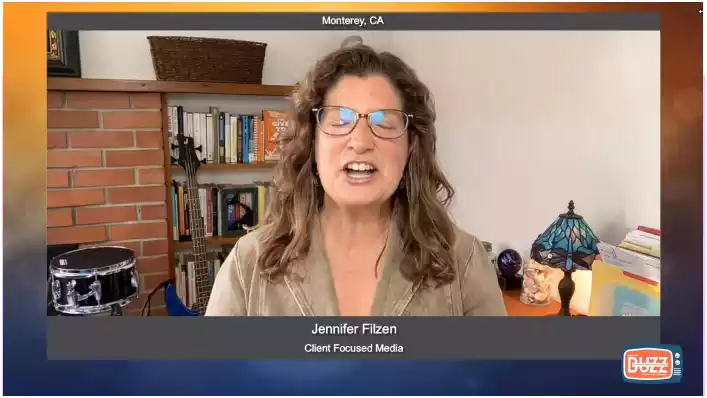Streamline Health Insurance's Prior Authorization Process | Virtual Solutions
Unlock the secrets of streamlining your health insurance's prior authorization process! Dive into our expert insights and discover how to navigate with ease. Read more now!

Navigating the complexities of medical prior authorization can be daunting, but with the right support, it becomes manageable. Virtual staffing companies, like ours, specialize in assisting patients and healthcare providers with the medical prior authorization process. Our experienced support agents guide individuals through the necessary steps, ensuring that all requirements are met for timely approval.
Let us simplify the process for you.
Table of Contents
Streamline Health Insurance’s Prior Authorization Process
 In the labyrinth of healthcare, where benefits of prior authorization is a string you want to hold onto. Health insurance operates on a complex pathway often mired in jargon and stipulations.
In the labyrinth of healthcare, where benefits of prior authorization is a string you want to hold onto. Health insurance operates on a complex pathway often mired in jargon and stipulations.
However, understanding and mastering prior authorization can be your golden thread, ensuring smooth access to the care you need while keeping costs manageable. Join us on a patient-focused expedition to unlock the mysteries behind prior authorization in health insurance.
The Basics of Prior Authorization
Prior authorization (PA), sometimes called “reauthorization,” is a requirement imposed by insurers before they agree to cover certain prescribed medications, procedures, or specialist visits. Usually, this procedure entails the healthcare provider filing clinical information about the patient to the insurance company to justify the necessity and appropriateness of the requested care. The goal is to avoid providing unneeded or incorrect medical care, which can save costs for the insurer and the policyholder by averting needless medical visits.
Why Does Your View Matter?
Prior authorization can significantly impact the timeliness of receiving medical care. Patients may face delays in treatment while waiting for the insurer to green-light a prescribed service. These delays, which can vary from a few hours to several days in the healthcare context, might determine whether an issue is one that can be handled or whether it is an emergency.
The Process Unpacked
The prior authorization process varies depending on the specific insurance company and the medical service or item type. However, in most instances, the process involves the following steps:
- When a treatment, prescription, or referral is deemed required, the healthcare provider gets in touch with the insurance.
- After that, the staff member or physician sends a pre authorization request to the insurance provider, frequently accompanied by supporting documentation and medical data.
- The insurer reviews the request against pre-defined criteria, and either approves or denies the service. Occasionally, the insurance company could ask the clinician for further details or present a different course of therapy.
Commonly Affected Services
Some services and items typically requiring prior authorization include:
- Certain medications, especially high-cost drugs or those that have alternatives at lower costs.
- Specialty care, such as seeing a dermatologist or allergist.
- Advanced imaging services like MRIs or CT scans.
- High-frequency services like physical therapy.
- Puzzles and Pitfalls
Navigating the prior authorization process can be likened to solving a complex, high-stakes puzzle. The pieces are not only the required forms and information but also the insurer’s playbook rules and the often bewildering array of medical codes and terminology.
Understanding the Insurer’s Playbook

Each insurance company has its own set of rules and guidelines regarding prior authorization, often in the form of a medical policy or criteria. These are created to guarantee that patients receive effective care that is medically essential and are guided by clinical evidence. But these rules can seem mysterious and difficult for a patient to understand, which makes speaking up for oneself or a loved one even more important.
Medical Codes and Terminology
The prior authorization process involves a significant amount of medical terminology and codes, essential for accurately identifying the requested services or medications. Errors or omissions in these details can lead to a denial and subsequent delay in care. This is where an informed physician and a knowledgeable patient can collaborate to ensure the prior authorization request is thorough and correct.
Denials and Appeals
A denied prior authorization does not need to be the final word. Most insurers provide a process for appeal, which may involve additional documentation or a clinician-to-clinician conversation to justify the requested service’s necessity further. Understanding the reasons for denial is crucial to mounting a compelling appeal.
I'm very thankful for Portiva who I know is looking after my practice while I'm gone the virtual assistants can manage prescription refills, documents they can triage patients and just kind of answer administrative questions and they can handle a lot on their own. But also, they're very good about contacting me if there's any emergency or anything I need to attend to. So I'm very thankful for Portiva they can help almost any provider almost anywhere and it really allows for some good work-life balance as I'm getting to experience right now at my family farm so I'm very thankful for Portiva and I'm very happy to use their services"

Board Certified Family Medicine Physician

Portiva's Virtual Medical Assistant - I have all the support I need. There's somebody checking my email, any patient messages. Patients are still able to schedule and handle any scheduling issues and any kind of billing that needs to still go through. Portiva hands handles it all for me. I have support i have somebody that I can access 24/7 pretty much. It's all very seamless. If somebody has an emergency or needs a medication called in. I know that the va's at portiva will handle that for me.

Board Certified Family Medicine Physician

Patient Empowerment Strategies

Patients must actively participate in their healthcare and insurance management to turn the tables on the complexities of prior authorization. Empowerment comes through knowledge and action, and these strategies can bolster your position:
Know Your Policy
The first step to empowerment is understanding your health insurance policy, particularly its provisions related to prior authorization. Be sure to find out the rules before you need a service. Be familiar with what is and is not covered and the steps involved in seeking coverage for various services.
Build a Support Network
Having knowledgeable allies can make a world of difference. From care coordinators at your healthcare provider’s office to patient advocacy organizations, tapping into a support network can provide valuable guidance and resources in dealing with prior authorizations.
Keep Detailed Medical Records
Accurate and organized records of your medical history and current treatments can expedite the prior authorization process. Please keep copies of all correspondence and documentation related to your prior authorization requests, including the request itself, the clinical information provided, and any appeal paperwork.
Request and Understand All Written Communications
From the initial discussion with your provider about a recommended treatment to your insurer’s final determination, ensure all communications and correspondence are provided in writing. This documentation can be essential in appeals and ensuring that all parties agree regarding the services in question.
Be Proactive and Persistent
If possible, start the prior authorization process well in advance of your anticipated service and follow up regularly. Persistence in pursuing timely approvals can help avoid unnecessary interruptions in your care.
The Human Element
Throughout the prior authorization process, a human element is often overlooked in discussions of medical bureaucracy. For patients and providers, prior authorization is not merely a process but a series of interactions that affect health outcomes and the emotional well-being of those involved.
Managing Frustrations
Long wait times, cumbersome paperwork, and occasionally obtuse insurer representatives can lead to frustration. Finding healthy ways to manage this stress, such as activities like mindfulness exercises or deep breathing exercises, might be just as significant as administrative work.
Compassionate Care Coordination
Healthcare providers and their staff are often equally affected by prior authorization challenges. Engaging in respectful and compassionate communication can benefit the patient and foster a collaborative and supportive care environment.
When to Seek Support
If the prior authorization process becomes overwhelming, it may be time to seek support. Many healthcare systems have patient ombudspersons or advocates who can step in to help, and there are numerous online resources and support groups where individuals can share their experiences and advice.
Looking to the Horizon
The healthcare and health insurance landscape continually evolves, and the prior authorization process is no exception. Increased scrutiny on the impact of prior authorization on patient outcomes and satisfaction may lead to changes in policy and approach.
Potential Reforms
There is growing recognition that the prior authorization process, while necessary, can sometimes be unnecessarily burdensome. Some states have enacted legislation to streamline the process, reduce delays, and increase transparency. National conversation and potential reforms are ongoing to preserve the intent of prior authorization while minimizing the associated challenges.
Technological Innovations
Advancements in digital health and data management offer promise for more efficient and patient-centered prior authorization processes. Electronic prior authorization systems are being developed to simplify and expedite the process, and predictive analytics could lead to more automatic approvals for routine, low-risk requests.
Conclusion: The Ongoing Journey
Prior authorization is a critical checkpoint for receiving necessary medical care. While it may seem like an imposing hurdle, a well-prepared and proactive approach can help patients and providers navigate the complex and time-consuming process.
Arm yourself with knowledge, maintain detailed records, engage with your support network, and understand that persistence can make a difference in the outcome. As healthcare consumers, our understanding of and experience with prior authorization can drive conversation, policy, and, ultimately, a more humane and efficient process for all involved. Patient empowerment is not about defeating the system but about working within it to ensure that the care you need is the care you receive. Each successful prior authorization is not just a victory for the individual but for a healthcare system that values efficacy, compassion, and positive health outcomes.
In the tapestry of healthcare, prior authorization is a thread that binds our responsibility as patients with insurers’ and providers’ duty to deliver care that is not only beneficial but also accessible. With informed advocacy and a commitment to continuous dialogue, we can contribute to a future where the path to wellness is clearer and the system more attuned to the needs of those it serves.
To learn more about cost containment that can enhance your medical practice. Discover more about Portiva and unlock a world of possibilities by visiting our homepage today!
- Quality assurance in prior authorization
- Provider training in prior authorization
- Cross-sector collaboration in prior authorization
- Operational excellence in healthcare prior authorization
- Financial landscape of prior authorization in healthcare
- Patient’s complete guide to navigate prior authorization
- Transitioning prior authorization tasks
- Precertification in private practices
- Healthcare prior authorization
- Optimal results in prior authorization
- Patient satisfaction and prior authorization
- Precertification efficiency with virtual medical assistants
- Elevating patient care through outsourcing preauthorization
- Handling common hurdles in precertification
- Maximizing success in prior authorization
- The future of electronic prior authorization
- Prior authorization compliance in healthcare
- Measuring efficiency in prior authorization

